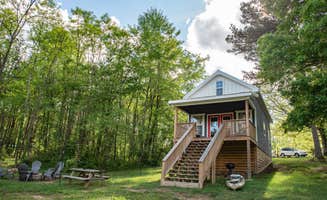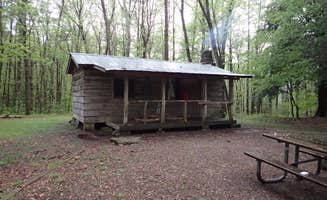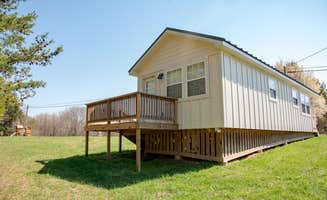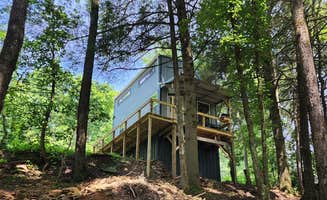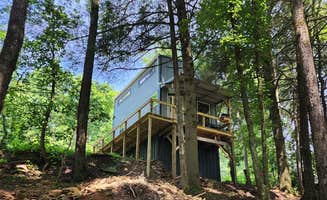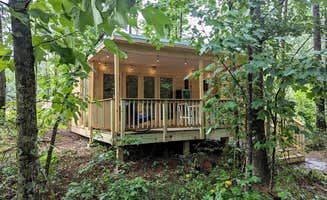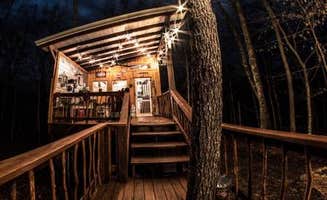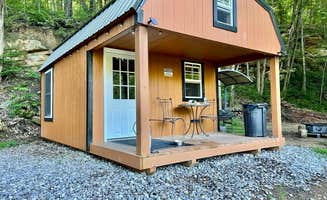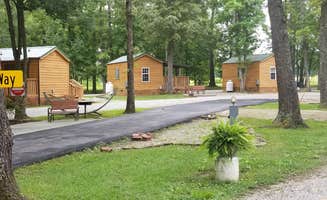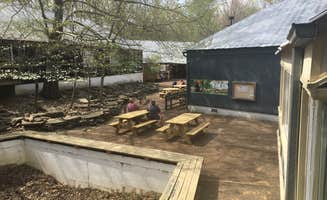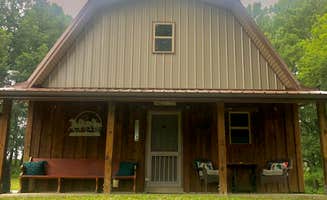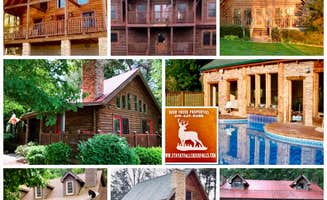Cabin accommodations near Beersheba Springs, Tennessee range from primitive shelters accessible by hiking trails to well-appointed structures with modern amenities. Located on the Cumberland Plateau at approximately 1,800 feet elevation, this area experiences cooler temperatures than surrounding lowlands, with summer highs typically 5-10 degrees lower than nearby valley locations. Winter conditions can be harsh at higher elevations, particularly during January when overnight temperatures regularly drop below freezing.
What to do
Hiking to waterfalls: At Fall Creek Falls State Park, located 30 miles from Beersheba Springs, visitors can access multiple waterfall trails including a challenging hike to the base of the namesake falls. "One of the best hiking parks I've ever been to. Miles and miles of trails; short, long, loops, overnights. This place has it all. Make sure you do three things while you're there: hike to the bottom of the big waterfall (Fall Creek Falls), swim in the cascades next to the nature center, and stand on the edge of the bluff at Buzzard's Roost," notes one Fall Creek Falls State Park Campground visitor.
Cave exploration: Several caves are accessible within a short drive. "The Cave tour is a must, but prepare to get dirty," reports one camper who stayed at Cloudland Canyon State Park. Raccoon Mountain Caverns offers guided tours with varying difficulty levels for different age groups.
Paddling opportunities: The Barren Fork River in McMinnville provides calm paddling suitable for beginners. "We took a river tube and a paddle and it was awesome. They have a shuttle that will drop you off," explains a Smooth Rapids visitor. During water releases at Rock Island State Park, more experienced paddlers can find challenging conditions near the dam.
What campers like
Secluded cabin sites: Many visitors appreciate the privacy offered at certain properties. At Glamping at Deer Camp, one guest notes, "The property is extremely quiet and peaceful. You feel like you are in the deep woods far away from civilization. The treehouse is perfectly placed for privacy."
Comfortable sleeping arrangements: While primitive, several cabins offer better-than-expected sleeping comfort. A guest at Camp Chet shares, "We stayed in The Pepoon Cabin and the bed was so comfortable! There was a gas heater we didn't end up using, but good to know for future colder visits."
Outdoor cooking setups: Many cabins provide cooking facilities beyond basic fire pits. "The outdoor cooking area is so cool and functional. We made coffee with the percolator in the morning, but when we return we will plan on a full breakfast!" writes a Glamping at Deer Camp visitor. Camp Chet gets similar praise: "They also had a shed filled with tools, extra paper products, fire starting equipment, various kitchen supplies (like pots and pans!), and so much more."
What you should know
Weather considerations: The plateau can experience sudden temperature drops and storms. "Hobbs Cabin itself is a primitive shelter, with six wood bunks. Maximum occupancy is six people. Features a wood fireplace and fire ring. Spring is located approximately 50 yards south of Hobbs cabin. Spring water may not be available during dry conditions," explains a visitor at Hobbs Cabin Campground.
Reservation requirements: Most accommodations require advance booking, with summer and fall weekends filling months ahead. "We reserved 148 days prior to arriving," notes one visitor to Raccoon Mountain Caverns and Campground.
Trail access: Several cabins require hiking access with varying difficulty. According to a Hobbs Cabin visitor, "The cabin can be accessed via the North Rim Trail or the North Plateau Trail, which can be combined as a loop for an overnight trip."
Supply planning: Stock up before arrival as services are limited. Several cabin properties provide unexpected amenities. "Cabin - treehouse was very nice. Everything you need is there. Just bring food and clothes (jacket, toboggan etc… for cold nights)," notes a guest at Glamping at Deer Camp.
Tips for camping with families
Pool access for cooling off: During summer, look for properties with swimming options. "The nearby swimming beach was great for the kids. Many short hiking options available," writes a visitor to Rock Island State Park Campground.
Adventure activities: Several locations offer activities beyond hiking. At Bigfoot Adventure RV Park, a visitor reports, "Zip lining, small catch & release pond, biking, hiking, & cliff views available."
Playground considerations: Some campgrounds offer play areas. "We really enjoyed the playground. The whole park was just really well kept. Bathrooms and showers were clean and in great shape," shares a Rock Island State Park visitor.
Easy trail options: For young hikers, seek out shorter trail options. "There are two hiking trails accessible from the campground. I hiked a short distance on the Bluff Trail until it became narrow and overgrown. There are other hikes that require a drive from the campground," explains a Rock Island visitor.
Tips from RVers
Site leveling challenges: Many cabins and RV sites in this mountainous area require leveling equipment. At Bigfoot Adventure RV Park & Campground, a camper notes, "Very open and not hard to get RV into spots. Great experience for kids. Wonderful views and lots of open space to play in fields and walk."
Utility connections: Check available hookups before booking as they vary widely. "We noticed was the large cement patio with table, chairs, bench, stand up barbecue, and fire pit. The utilities are located smartly in the middle of the pad to include an extra sewer connection near the pad's front," explains a visitor to the former Manchester KOA campground.
Winter heating options: If camping during colder months, confirm heating arrangements. Many cabins offer propane or gas heating systems, while others rely solely on wood fireplaces. "There is a gas log fireplace in the cabin and in the bathhouse," notes a Glamping at Deer Camp guest.


